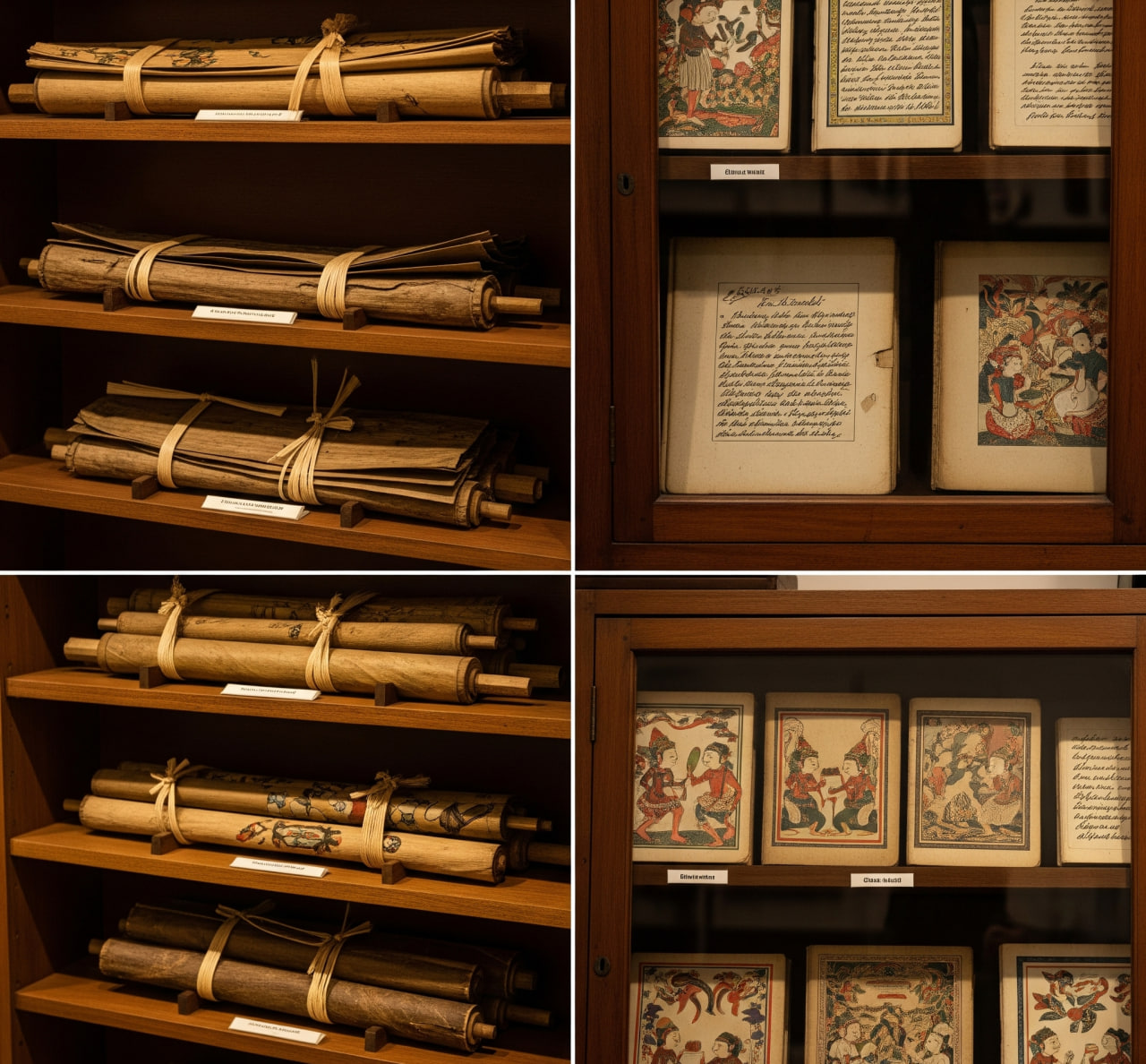News
Sonobudoyo and Its Ancient Manuscripts: Guardians of Ancestral Memory
Behind the stately calm of Museum Sonobudoyo, nestled not far from Jogja’s northern alun-alun, lies a treasure more precious than gold ancient manuscripts. Leaf after fragile leaf, handwritten in Javanese script, Arabic Pegon, and Balinese characters, these manuscripts stand as silent witnesses to the sweeping journey of Nusantara’s civilization. From palm leaf lontar to European paper, each piece is cared for as tenderly as life itself because, in truth, they are the very breath of our ancestors.
The manuscript collection at Sonobudoyo is not just a display of relics under glass. It is a grand narrative of civilization, composed through ink and time. There are religious texts, epics of wayang tales, treatises on traditional medicine, and moral and philosophical teachings in the Javanese worldview. Each manuscript is crafted in the language and spelling of its era, proof that literacy in the archipelago blossomed long before the typewriter ever arrived.
Imagine encountering an ancient text outlining treatments for illnesses with herbal remedies, complete with invocations and ritual prayers. Or a primbon manuscript that records auspicious days for farming, marrying, or even moving house. These manuscripts are more than written words they embody a way of life, a living wisdom passed down not through formal schooling, but through the patient work of hands writing night after night.
Lontar dried, finely carved palm leaves was the primary medium at first. Using a tiny knife called a pengutik, scribes etched letters into the surface, later blackened with soot to make the writing visible. This simple yet ingenious technology produced documents that have outlived centuries. When paper became scarce or expensive, artisans turned to wood fibers or animal skin. Whatever the medium, the spirit was the same: to safeguard knowledge against the erosion of time.
Sonobudoyo doesn’t just store these precious manuscripts it breathes new life into them. Through digitization efforts, fragile ancient texts are scanned and made accessible to wider audiences without risking damage to the originals. Technology here becomes a bridge, not a replacement—a tool of reverence, not convenience.
From a single small manuscript, sometimes hundreds of years old, we can glimpse a bygone world rich with wisdom and ingenuity. Our ancestors didn’t just survive they thought, recorded, and dreamed through writing. And Sonobudoyo remains the silent guardian of these voices, ensuring that we can still hear them today.
So if you ever step into Sonobudoyo’s manuscript room, pause for a moment. Gaze upon the leaves behind the glass. Imagine the hand that once carefully inscribed them a poet, a healer, or perhaps an ordinary farmer who believed in the power of knowledge. One thing is certain: through every stroke of the pen or etch of the pengutik, they whispered to us across time knowledge is the truest treasure of all.



